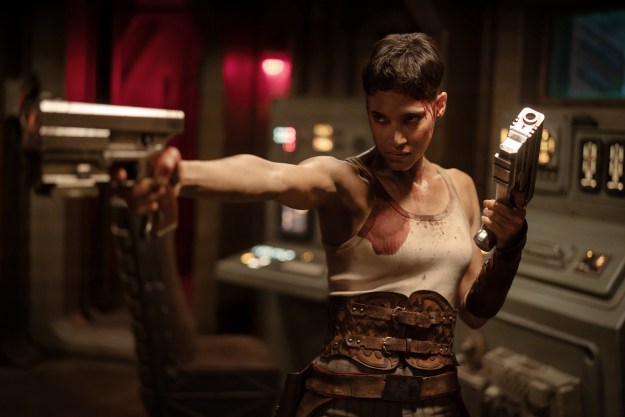Michael Bay has become a household name thanks to his work on blockbuster Hollywood titles like Armageddon, Pearl Harbor, and the first five live-action Transformers films. As a director, Bay embraces maximalist filmmaking on a scale that few of his contemporaries do. His love for blowing things up and bringing massive CGI set pieces to life has even resulted in the creation of “Bayhem,” a term coined as a shorthand to describe the mind-numbing, overwhelming action filmmaking that Bay specializes in.
But what Bay’s modern-day fans may not know is that the filmmaker first made a name for himself by directing dozens of high-profile music videos throughout the late 1980s and early ‘90s. Throughout this time, Bay made music videos for everyone from Tina Turner, Wilson Phillips, and Lionel Richie to Meat Loaf. Despite his experience in the form, Bay more or less left music videos behind after the release of his first feature film, Bad Boys, in 1995.
However, as is the case for many of the filmmakers who have come up in the industry through similar means, Bay’s music video work is fascinating to watch knowing the movies he’s directed throughout his career. So, in honor of the upcoming release of his newest film, the Jake Gyllenhaal-led Ambulance, now feels like as good a time as any to look back on Michael Bay’s music video work and see just how much his style has — and hasn’t — changed over the past 30 years.
The early days
According to IMDb, Michael Bay directed his first four music videos in 1989, beginning with Call It Love by Poco. All of the videos are predictably less polished and more pared-down than the films Bay has made a name for himself with. That said, their lower budgets didn’t prevent Bay from using many of the same tricks in them that he has continued to implement throughout his career.
For instance, several of the videos feature the kind of quick-moving low-angle Steadicam shots that Bay has used in nearly all of his films. That’s especially true for the Call It Love video, with Bay shooting the members of Poco with a mix of both crane and Steadicam shots. The video’s low-angle images even allow Bay to include a number of lens flares, which come courtesy of an overexposed window in the background and make certain moments feel like they could have been pulled straight out of one of Bay’s Transformers films.
All of these early videos also showcase Bay’s tendency to, for lack of a better term, ogle gorgeous people with his camera. The Call It Love video includes several moments of very beautiful — and very sweaty — men and women leaning against smoking cars at sunset. If you look at these scenes through squinted eyes, it’d be easy to think they’re from one of Bay’s Transformers movies.
Honing his vision
From 1990 to 1994, Michael Bay continued primarily to make music videos, and like all music video directors, his work throughout these years varies greatly depending on the artist he was working with and the type of song he was handling. However, throughout the entirety of this period, Bay’s growth as a visual stylist and filmmaker is undeniably clear.
The lens flares and gliding camera movements from his early music videos continue to be present in his work, but in videos for songs like Colin James’ Keep on Loving Me Baby, Bay can be seen experimenting more with editing, camera movement, and composition. The more he works, the more comfortable he becomes using Dutch angles, and many of the rock videos he directed from 1990 through 1992 are edited in much more frenetic, impressionistic ways than his earlier work.
For anyone who has seen one of Bay’s action films, the way he constructs videos for songs like Keep on Loving Me Baby and Tina Turner’s Love Thing will feel very reminiscent of how he still shoots and edits action set pieces. His video for Winger’s Can’t Get Enuff, meanwhile, feels particularly indicative of what Bay’s films would eventually look like. Not only does it have the same smooth, fast-paced camera movements and choppy editing choices seen in his previous music videos, but it’s also filled with shots of half-naked models silhouetted in the director’s trademark orange light.
Bay’s growth throughout this period of his career is important, but his work as a music video director ultimately culminates in 1993 when he helms a project that feels like a mission statement for him as both a filmmaker and artist.
A turning point
In 1993, Michael Bay directed the iconic music video for Meat Loaf’s I’d Do Anything For Love (But I Won’t Do That). The video opens with a police chase through Los Angeles that not only includes cop cars, motorcycles, and a helicopter but also takes place at sunset, which means the entire sequence is covered in an overwhelming orange haze. The opening’s big-budget scope, combined with its aesthetic and fast-paced editing style, makes it look like a sequence from one of Bay’s future action films.
As a whole, the video marked a step up for Bay from his previous work. Aside from the fact that it boasts a significantly bigger budget than many of the music videos he’d directed in earlier years, it also shows Bay using all of his favorite visual and editorial tricks while still telling a complete story. Notably, the video also sees Bay experimenting more with visual effects, which is an area of blockbuster filmmaking he’s become quite familiar with throughout the second half of his career.
Following I’d Do Anything For Love, Bay directed the music videos for two more Meat Loaf songs: Rock and Roll Dreams Come Through and Objects in the Rear View Mirror May Appear Closer Than They Are. Both videos boast the same frenetic editing style that Bay has since relied on heavily throughout his career, and they even feature a few Bayhem-esque explosions. Several major movie stars, including Angelina Jolie and Robert Patrick, appear in the videos as well.
A clear arc
His collaborations with Meat Loaf were the final steps that Michael Bay needed to take in order to be ready to direct his first movie. He did just that in 1995 with Bad Boys, and 27 years later, has proven with Ambulance that he is just as skilled and idiosyncratic of a visual craftsman as he was back in 1993.
All that rewatching his music video work proves is that, for a director who loves on-screen chaos and non-linear action sequences as much as he does, the actual arc of Michael Bay’s career is fairly straightforward. That may be a bit ironic, but it also explains why he’s such a well-known and singular filmmaker. To put it another way: Michael Bay has always had his own style — and his early music videos prove that.
Michael Bay’s newest film, Ambulance, begins playing in theaters on Friday, April 8.




